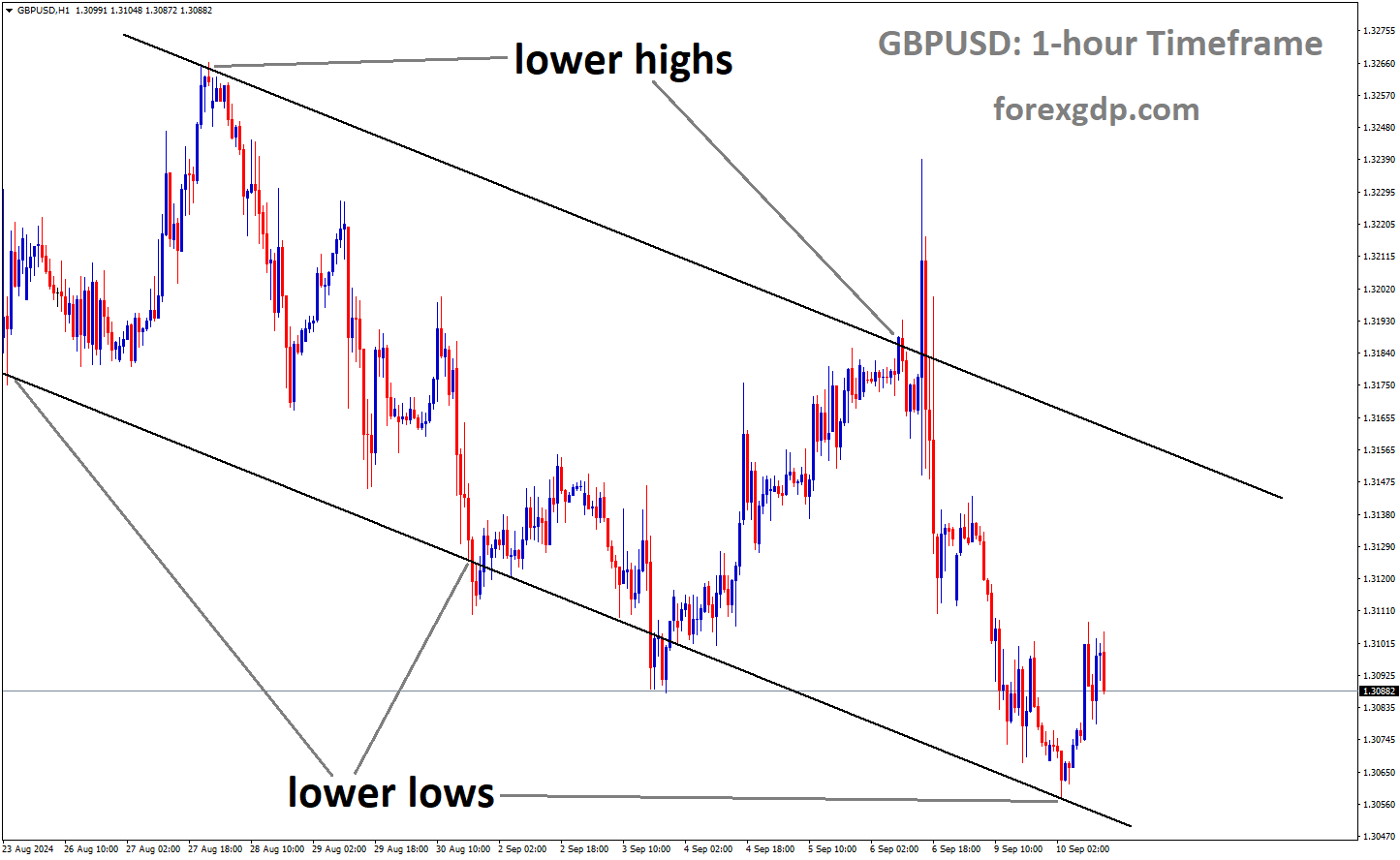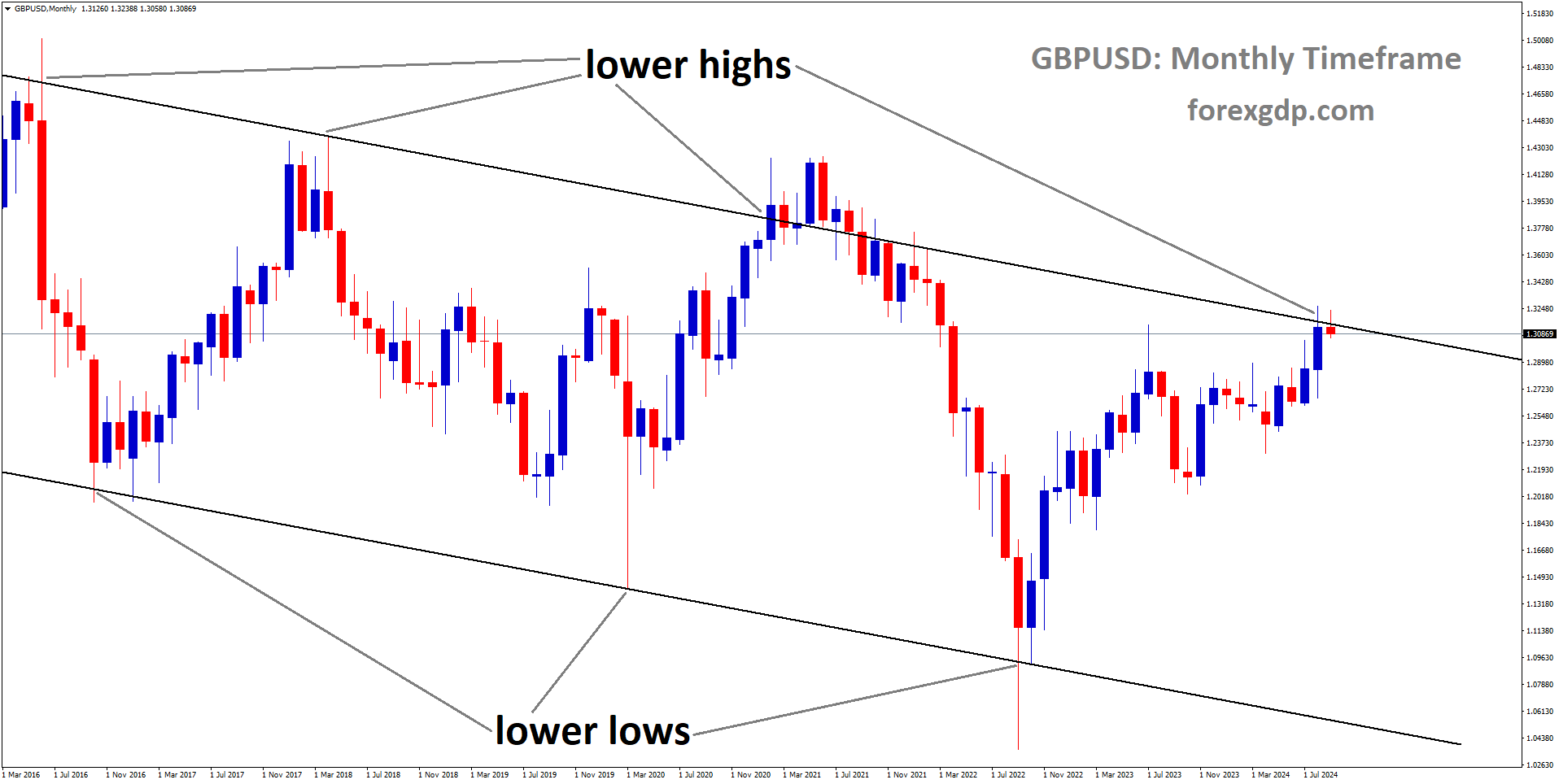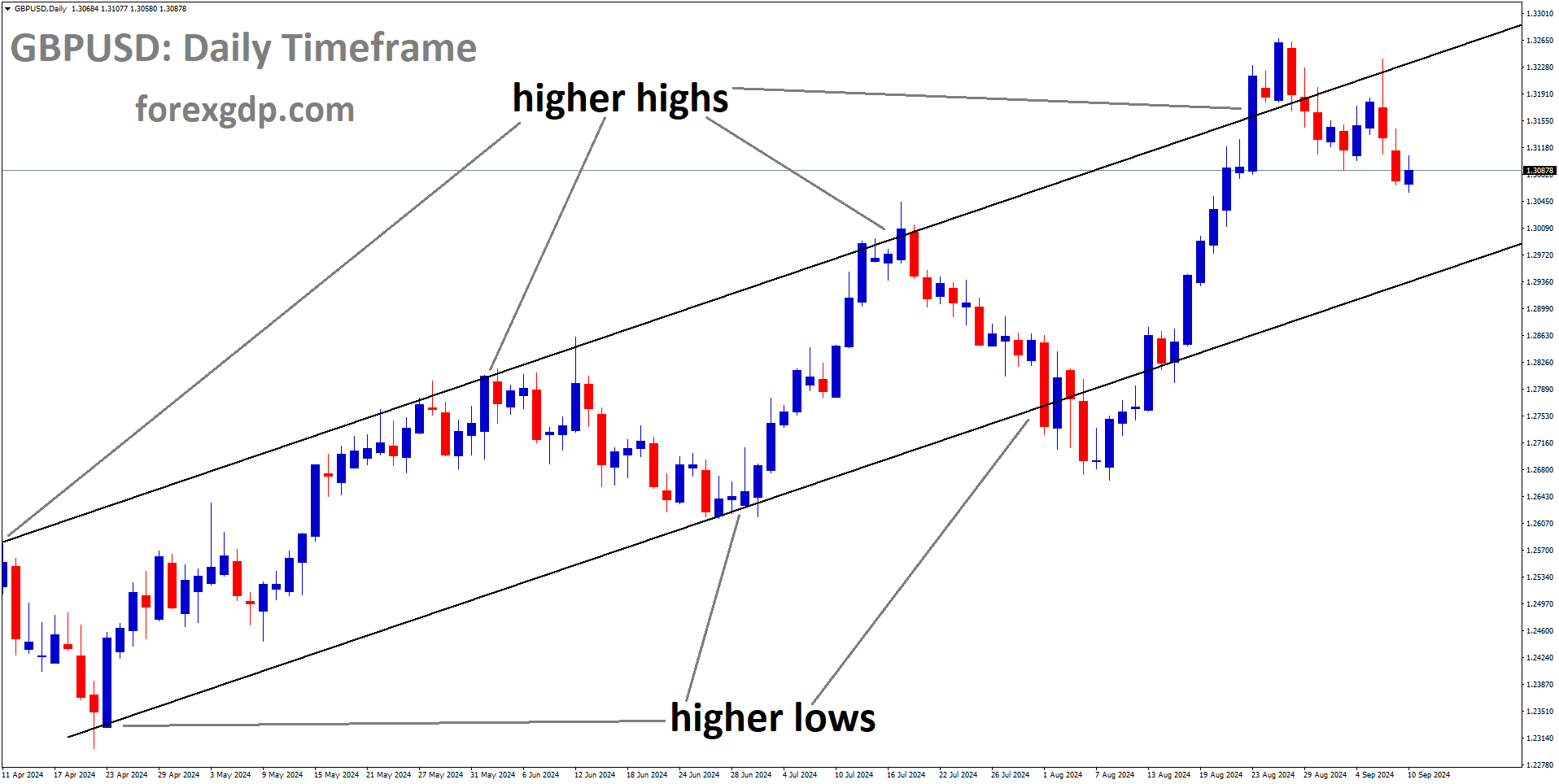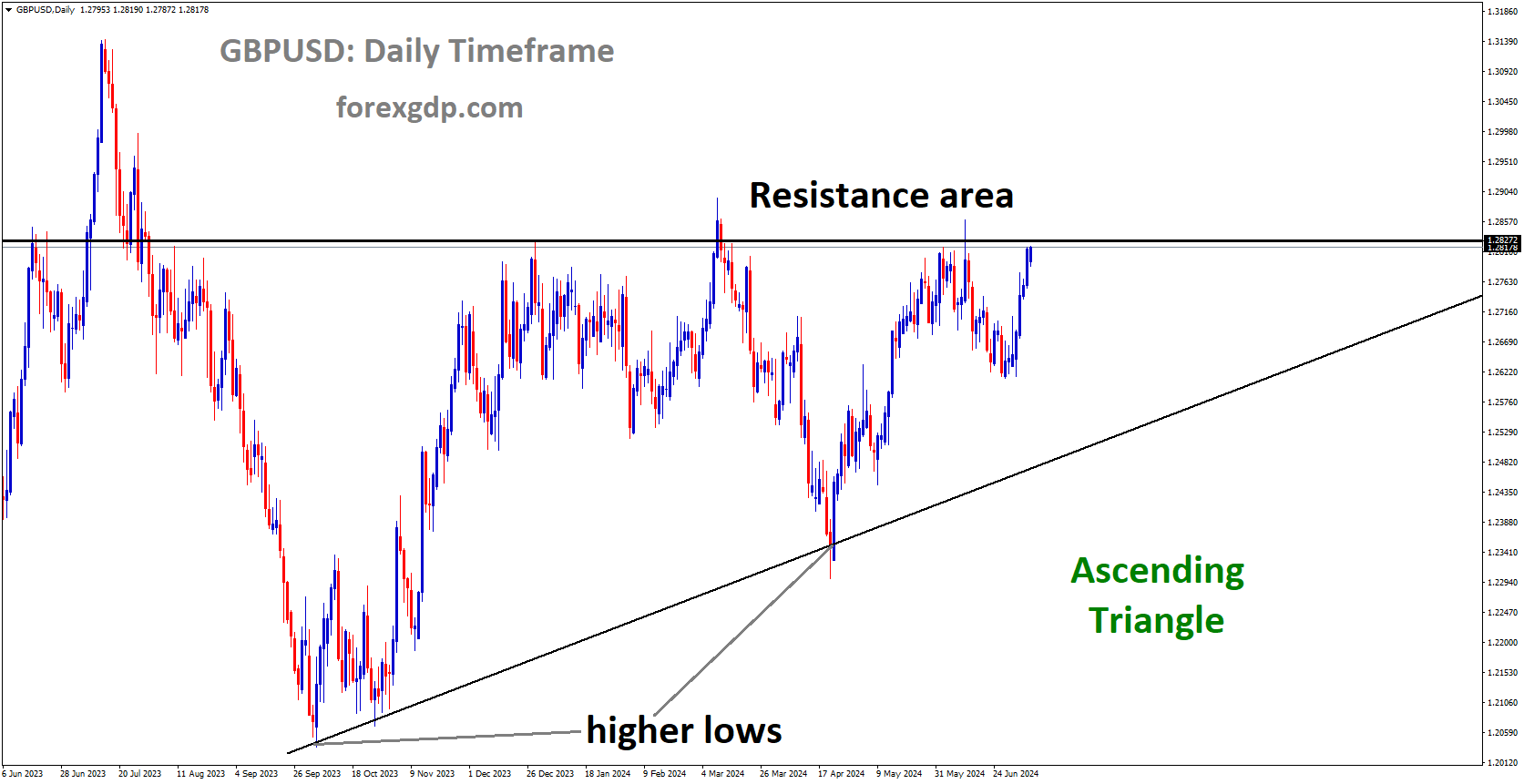GBPUSD is moving in a descending channel, and the market has rebounded from the lower low area of the channel
Pound Sterling Edges Higher Amid UK Labor Data and US Inflation Expectations
The currency market is often a space filled with uncertainty, as factors like employment reports and inflation data influence the behavior of major currencies. One such currency, the Pound Sterling (GBP), has recently seen some modest gains against the US Dollar (USD) after a mixed bag of labor market data from the UK. However, the future path of both the Pound and the Dollar remains cloudy as investors eagerly await further data, particularly from the US, to make their next moves.
Let’s dive into the key details surrounding the Pound’s current position, the broader market landscape, and what investors are watching for.
UK Labor Market Data and Its Impact on the Pound
Recent labor market data from the UK has presented a mixed picture. While there have been notable positives, such as strong job growth, some elements, like wage growth, have fallen in line with or slightly below expectations. This delicate balance of positive and not-so-positive news is what’s keeping the Pound’s movements modest but significant.
A Robust Employment Report
The UK’s employment figures are often a bellwether for the broader economy, and the latest numbers provided some positive momentum. The Office for National Statistics (ONS) reported that 265,000 new workers were hired, far exceeding the prior figure of 97,000. Job growth of this scale often serves as a green light for economic optimism, as more jobs mean more consumer spending and a healthier economy overall.
Moreover, the unemployment rate also showed signs of improvement, declining from 4.2% to 4.1%. This drop, while modest, reflects a stronger demand for labor in the UK.
Wage Growth Slows, Relieving Inflation Worries
While job growth is typically good news, wage growth plays a crucial role in inflation, which is a key concern for policymakers. The data showed that wage growth slowed more than expected, easing fears that higher wages would push inflation further. Average earnings, excluding bonuses, rose by 5.1%, which was in line with expectations but still the lowest reading in two years. This could signal that the inflationary pressure driven by wage increases might be cooling off.
Interestingly, wage growth that includes bonuses fell faster than expected, coming in at 4%, down from 4.6% in the previous reading. While this may seem disappointing for workers, it’s potentially a relief for the Bank of England (BoE), which has been grappling with inflation concerns for quite some time.
Overall, the labor market data has provided the Pound with some support, but it hasn’t been enough to push it past key resistance levels, especially when compared to the US Dollar, which remains strong in its own right.
The US Dollar’s Strength and the Upcoming CPI Data
While the UK has its own set of economic challenges and opportunities, the global currency market is often dominated by the movements of the US Dollar. At present, the US Dollar is holding onto gains, supported by recent economic data and an air of anticipation surrounding upcoming US inflation figures.
US Nonfarm Payroll Data Shows Resilience
One of the key reasons the US Dollar remains strong is the resilience of the US job market. While the most recent Nonfarm Payrolls (NFP) data showed a slowdown in job growth, the figures were not as negative as initially expected. In fact, the data showed that the US economy is still creating jobs at a steady pace, even if the rate of growth has slowed down.
GBPUSD is moving in a descending channel, and the market has reached the lower high area of the channel
This resilience in the labor market has diminished expectations for aggressive interest rate cuts by the Federal Reserve. While many had speculated that the Fed might cut rates by 50 basis points, the latest data has made this less likely, with more market participants now expecting a more modest 25-basis-point cut.
All Eyes on the US Consumer Price Index (CPI)
Perhaps the most significant upcoming event for both the US Dollar and the Pound Sterling is the release of the US Consumer Price Index (CPI) data. This inflation data, set to be published soon, will be critical in determining the Federal Reserve’s next moves regarding interest rates.
Economists expect the headline inflation figure to decelerate to 2.6%, which would be the lowest level since March 2021. If this proves true, it could reinforce the idea that inflation in the US is cooling, which would give the Federal Reserve more leeway to ease interest rates.
However, if the inflation data comes in hotter than expected, it could shake up the market, prompting a reevaluation of how aggressive the Fed might be in cutting rates.
For now, the uncertainty surrounding the CPI figures is keeping the US Dollar relatively strong, and it’s also keeping the Pound from making any significant gains in the short term.
What’s Next for the Pound Sterling?
With so much focus on the US, it’s easy to forget that there’s plenty happening in the UK that could impact the Pound in the coming days and weeks. In addition to the labor market data, investors will soon be looking at the UK’s monthly GDP figures and factory data, both of which are set to be released soon.
Upcoming UK GDP and Factory Data
While employment and wage data are critical indicators of economic health, GDP and industrial production numbers can offer a more comprehensive view of the economy’s direction. Investors will be watching closely for these figures, as they will provide further insight into whether the UK economy is growing or contracting.
GBPUSD is moving in an Ascending channel, and the market has fallen from the higher high area of the channel
A strong GDP reading could bolster the case for the Pound, especially if it shows that the economy is holding up well despite inflationary pressures and global economic uncertainty. On the other hand, weak GDP or factory data could fuel fears of an economic slowdown, which might put downward pressure on the Pound.
BoE Rate Decisions on the Horizon
Another key factor that will influence the Pound is the next decision from the Bank of England. With inflation still a major concern, even with slowing wage growth, the BoE has been under pressure to keep interest rates elevated. However, with signs that inflation could be easing, there’s a growing sense that the BoE might start cutting rates sooner rather than later.
Investors are eagerly awaiting the BoE’s next move, and any hints at a rate cut could send the Pound higher or lower, depending on how the market interprets the central bank’s actions.
Final Summary
The Pound Sterling has seen some modest gains recently, buoyed by positive UK employment data. However, the story is far from straightforward. Wage growth is slowing, easing inflation concerns, but the broader economic picture remains uncertain. The Pound’s future performance will depend heavily on upcoming UK GDP and factory data, as well as decisions from the Bank of England regarding interest rates.
Meanwhile, across the Atlantic, the US Dollar remains strong, supported by resilient labor market data and anticipation surrounding the upcoming US CPI report. Investors are keeping a close eye on these inflation figures, as they will provide critical guidance on the Federal Reserve’s next steps.
As it stands, both the Pound and the US Dollar are in a bit of a holding pattern, waiting for more data before making any decisive moves. In the short term, investors would do well to stay alert to these upcoming reports and how they might shift the currency landscape.
Don’t trade all the time, trade forex only at the confirmed trade setups
Get more confirmed trade signals at premium or supreme – Click here to get more signals , 2200%, 800% growth in Real Live USD trading account of our users – click here to see , or If you want to get FREE Trial signals, You can Join FREE Signals Now!








